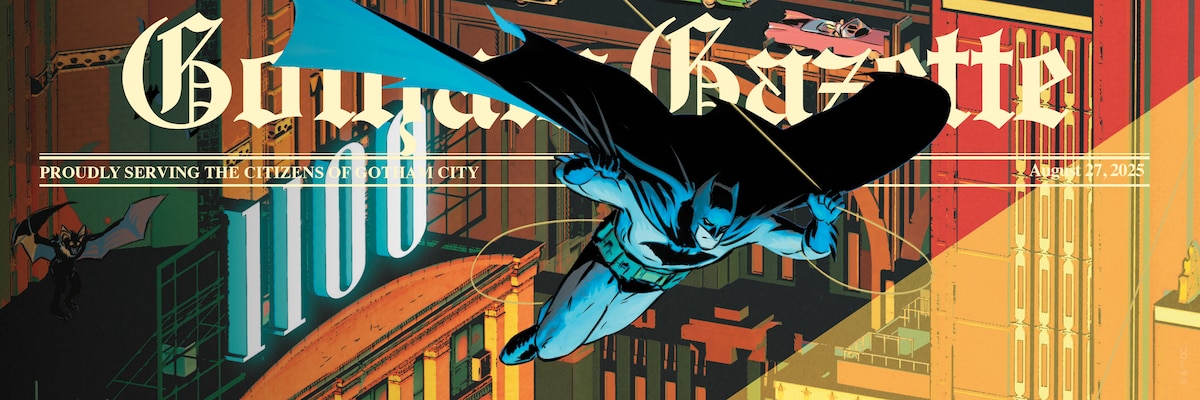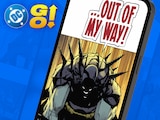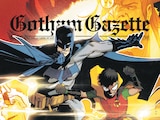Gotham City is a busy place, with a lot going down each and every week. In this monthly column, Joshua Lapin-Bertone helps you stay on top of it all by letting you know what you should be paying attention to within the Bat-Family…and why.
We’re going to need more candles.
This month, Detective Comics is celebrating its 1,100th issue, which is quite an accomplishment. While it’s true the Dark Knight didn’t show up until 1939’s Detective Comics #27, Batman is a big part of the title’s identity. The series would’ve never reached Detective Comics #1100 without him.
When I think of anniversary issues, I usually think of big action blockbusters like Action Comics #700, or big anthologies spotlighting various eras like what we saw 100 issues ago in Detective Comics #1000. Detective Comics #1100 takes a different and unexpected route, using four stories to illustrate the different relationships Gotham has with Batman.
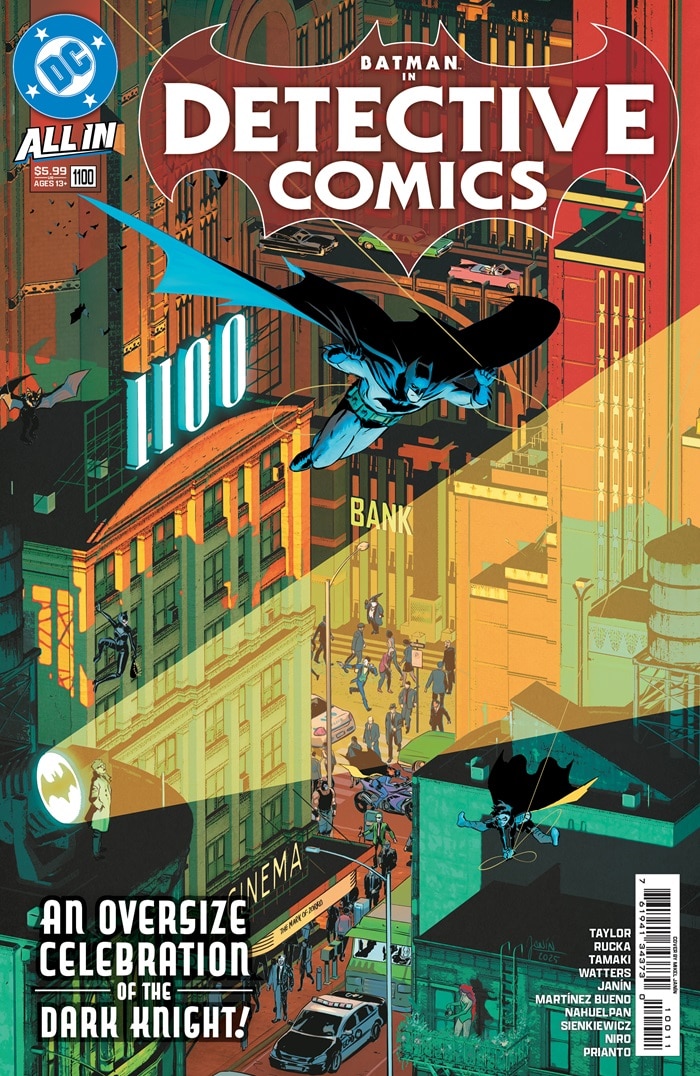
Think of it this way, you are a different person to various people in your life. Your coworkers get a different side of your personality than your family members, and your friend group has their own way of perceiving you. Nobody knows the full you, and everyone gets a different side of who you are.
Batman is the same way, and Detective Comics #1100 demonstrates that. The fact that each of the four stories has a different creative team helps drive that point home, giving each tale a unique perspective.
The first story is written by Tom Taylor and illustrated by Mikel Janin, and it focuses on Batman and Ace the Bat-Hound helping a deaf boy find his lost dog. The story shows who Batman is in the eyes of the innocent people he protects.
There’s a moment in the story that I can’t stop thinking about. As Batman tackles a fleeing criminal and begins to punch him, he turns around and locks eyes with the young deaf boy. He realizes that he’s frightening the boy and changes his approach, tying up the criminal instead of continuing to punch him.
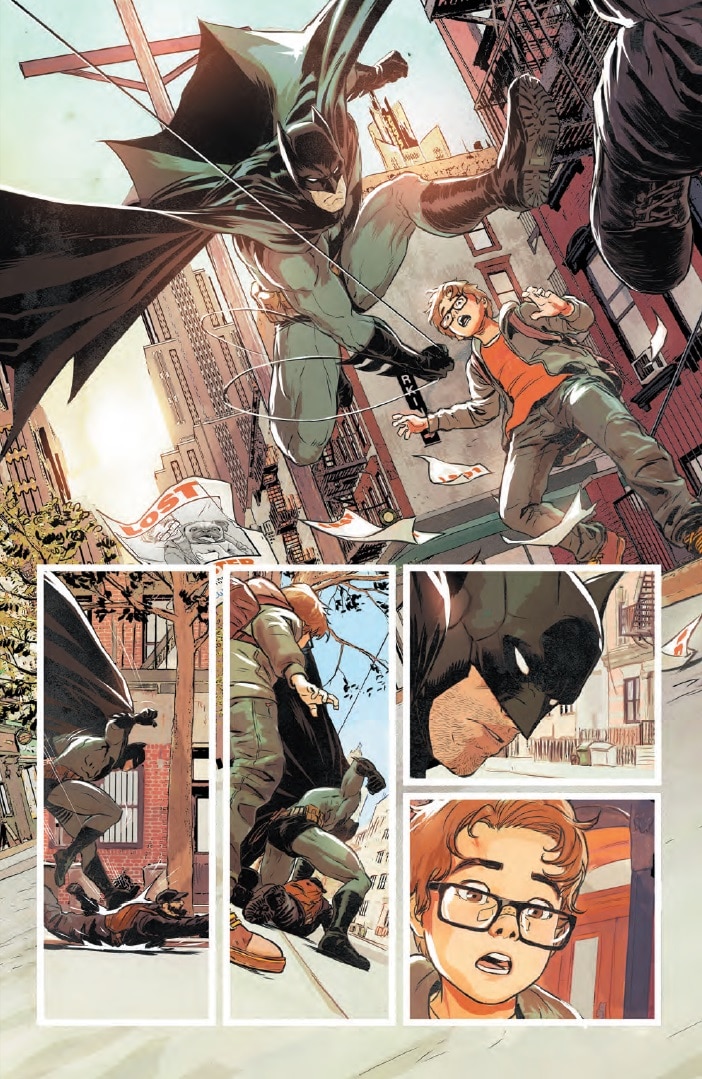
Yes, Batman is supposed to be scary, but he’s supposed to frighten criminals, not children. It’s easy to lose sight of that, but in one short scene, Taylor and Janin show that they get it. By the way, the entire scene is silent, and the team does a phenomenal job constructing such a nuanced scene without any words.
In fact, the entire story is told without dialog, which not only lets Janin’s artwork tell the story, but it helps us see the young deaf boy’s perspective. This allows us to see how he views Batman. I won’t give away everything about the story, but it was a strong one to begin the issue with and it had me crying by the end.
The second story is written by Mariko Tamaki and illustrated by Amancay Nahuelpan, and it explores the relationship Gotham has with Bruce Wayne. (Oh, and it also has a cool Akira Easter egg.) Bruce attends an event celebrating Gotham’s community heroes, and due to a seating error, he’s placed at a table full of reporters. Of course, the reporters only know Bruce Wayne as a flippant billionaire and challenge him to do more for the city.
“What are you going to do, write a bigger check next time?” one reporter asks. “Keep paying off your conscience instead of really helping Gotham.”
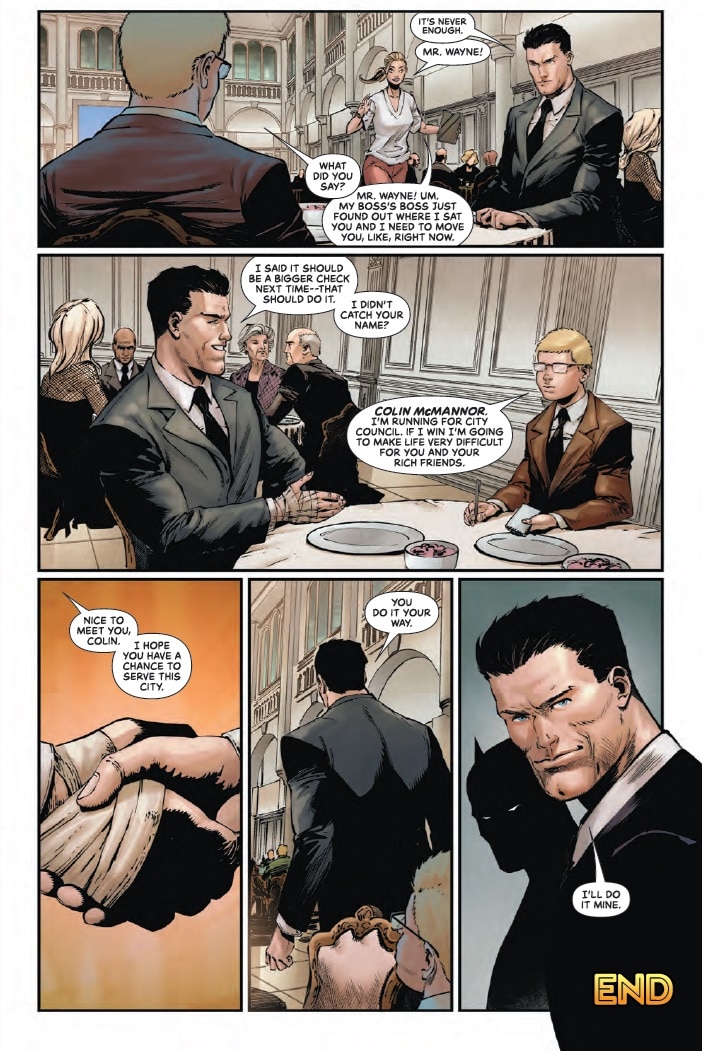
Throughout this conversation, we get flashbacks to Batman saving the community center worker who is being honored at the event. Bruce knows what he does to help the city, but he’s happy to let the reporters and the public at large believe whatever they want about Bruce Wayne. It’s not about image, it’s about helping the city and its people.
The third story focuses on Gotham’s hospital workers, and it’s written by Greg Rucka with pencils by Álvaro Martínez Bueno. This story gives us a perspective we don’t often see, which is Batman through the eyes of the doctors and nurses who clean up after his battles. Dr. Evans is new to Gotham and is concerned about all the injuries Batman is causing. How long before he hits someone too hard and kills them?
Another doctor named Ava has been in Gotham since before the Dark Knight’s arrival, and she can see the difference his presence brings. Before Batman, there would be up to ten deaths a night, and some of the victims were kids. After Batman’s arrival, the hospital began to see less corpses and the injuries became less severe.
“Instead of GSWs and stabbings, all of a sudden we’re treating breaks and bruises, concussions and cuts,” Ava says.
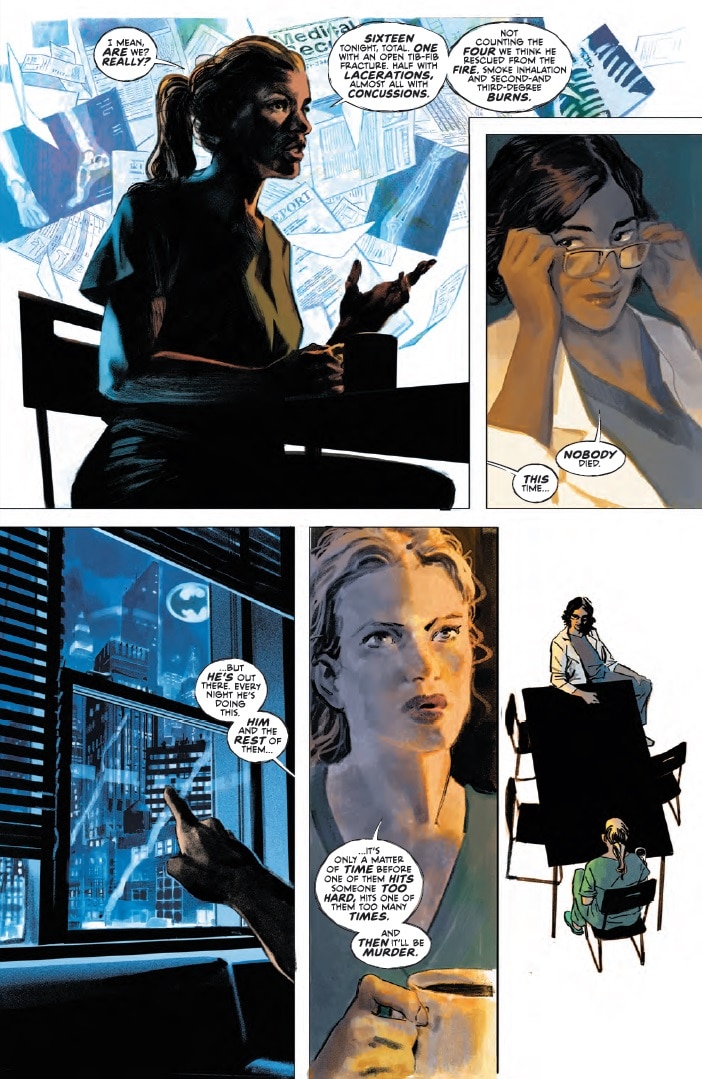
Eventually, we learn that Batman has been listening to the conversation, and he’s grateful for Ava’s words.
“You do make a difference,” she says. “You know that, right?”
“It can be…easy to forget,” Batman replies.
This moment serves as a reminder that we don’t always know our worth, and sometimes it takes looking at your impact through someone else’s eyes to see it.
By the way, Greg Rucka is one of the writers behind Gotham Central, an excellent 2002-2006 police drama set in Gotham City. This story gave me some serious Gotham Central vibes, and now I really want to see Rucka tackle a medical drama set in Gotham.
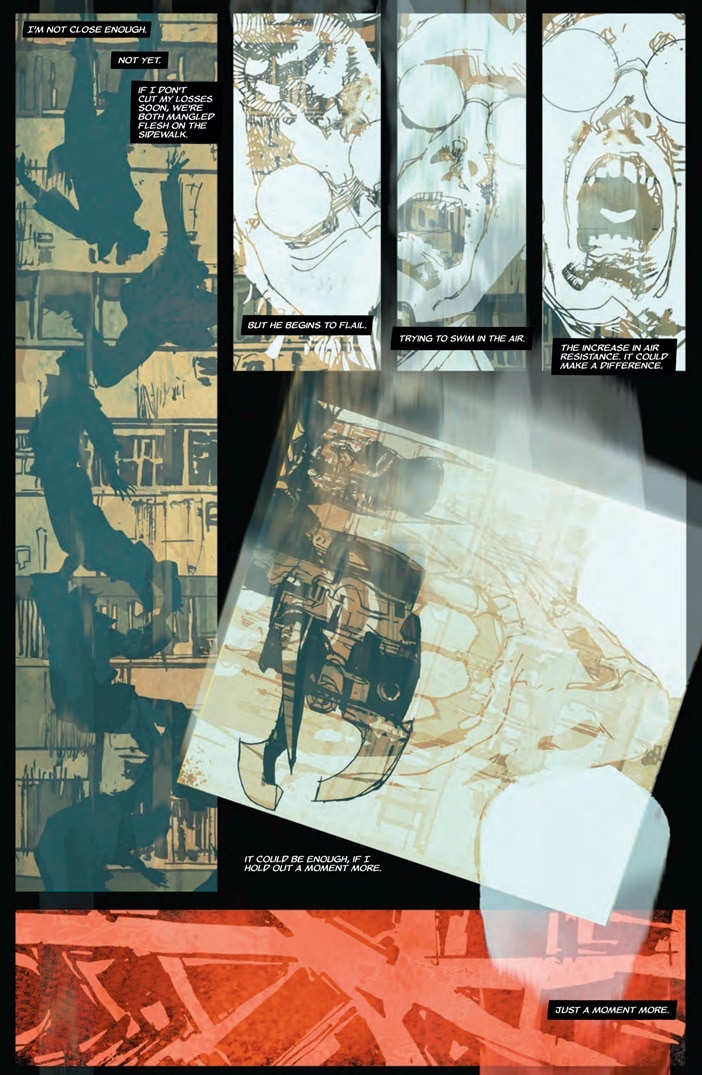
The final story is written by Dan Watters and penciled by Bill Sienkiewicz, and it focuses on a criminal who leaps from a skyscraper, daring Batman to catch him. Batman jumps after him, risking his own life to save a murderer. If Batman doesn’t pull away and grapple up in time, he’ll die too, but he continues to fall, hoping to catch the unnamed villain.
Interestingly, this is the only story in the issue which gives us Batman’s inner thoughts. However, it still shows Batman from someone else’s perspective, which in this case is a low-level criminal. It reminds us that Batman is a hero to everyone, no matter who you are and what you’ve done. The Dark Knight will put his life on the line to save yours, even if you’re a murderer.
We’ve had 1,100 issues of Detective Comics since the book began and it’s still finding new and interesting things to say about its titular detective. The story is far from over, and this issue makes it clear that there are still thousands of tales left to tell.
Detective Comics #1100 by Tom Taylor, Mikel Janín, Mariko Tamaki, Amancay Nahuelpan, Greg Rucka, Álvaro Martínez Bueno, Dan Watters, Bill Sienkiewicz, Arif Prianto and Giovanna Niro is now available in print and as a digital comic book.
Joshua Lapin-Bertone writes about TV, movies and comics for DC.com, is a regular contributor to the Couch Club and writes our monthly Batman column, "Gotham Gazette." Follow him on Bluesky at @joshualapinbertone and on X at @TBUJosh.
NOTE: The views and opinions expressed in this feature are solely those of Joshua Lapin-Bertone and do not necessarily reflect those of DC or Warner Bros. Discovery, nor should they be read as confirmation or denial of future DC plans.
